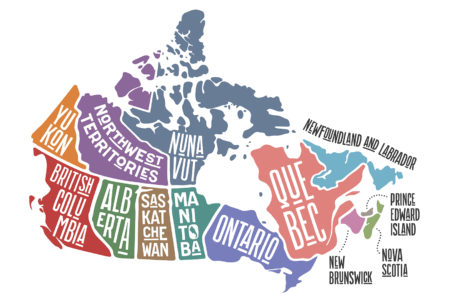
-
Balados 138

With the world in crisis, Canada’s foreign minister, Lester B. Pearson, arrived in New York in November 1956 to participate in UN General Assembly proceedings. Following a highly suspect sequence of events, including an Israeli invasion of Egypt, Britain and France had taken military action to secure the Suez Canal, which had until recently been owned and operated by a joint British/French company. The canal had been nationalized in July 1956 by Egypt, much to the consternation of British Prime Minister Anthony Eden. Pearson, who would win the Nobel Peace Prize for his intervention, stage-managed the creation of a UN Emergency Force (UNEF). UNEF would be positioned between the conflicting sides in order to stabilize the situation. In doing so, Canada helped prevent a split in the Western alliance and avoided handing the Soviet Union a propaganda victory that might have allowed it to strengthen its influence with the emerging Afro-Asian bloc.
Canadian diplomacy was facilitated by a well-developed and maintained set of linkages, both in New York and globally. Canada enjoyed what is now called “network centrality,” serving as the most direct and efficient means of contact between the parties in the crisis. As will be discussed below, network centrality is even more important to diplomacy today, and Canada should build upon this historic strength.
In 1956, Canada served as a bridge between four main players. The first party was Britain, which had manoeuvred itself into an untenable situation and needed to extricate itself from the canal area. France and Israel, Britain’s co-conspirators, would follow London’s lead. The second was Egypt, whose consent was needed for UN forces to land on its soil. The Israeli invasion had aggravated nationalist opinion and consent would be difficult to obtain. A third party was the United States. Its support for any mission was essential, and US-British relations were at their nadir. Finally, the Afro-Asian bloc within the General Assembly was a political force that needed to be brought onside. Within this bloc, India was a particularly influential player.
While all sides had an interest in resolving the crisis, most were not on speaking terms. Canada was well positioned to exercise network centrality during the crisis. In addition to maintaining close relations with the US and Britain, Canada had opened diplomatic missions in Cairo and New Delhi led by highly able diplomats. Canada had made a deliberate attempt since at least 1950 to cultivate linkages with non-Western countries. In addition, Pearson had extensive contacts within the General Assembly, developed in part from his stint as its president. These diverse linkages paid dividends during the crisis.
Owing to Canada’s strategic position within the network of actors, Pearson obtained privileged information on several occasions that allowed him to anticipate the responses of key players, which helped in crafting and timing diplomatic propositions to bring about agreement. For example, Pierson Dixon, the head of Britain’s permanent UN delegation, recognized that a snap vote would not allow him to get instructions in time from London. So, according to Terence Robertson’s Crisis: The Insider Story of the Suez Conspiracy (1964), he confidentially urged Canada to sponsor a quick vote. In such a scenario, Dixon would be obliged to abstain. Pearson then pushed for a snap vote, held at 2 a.m. on a Sunday, and Britain did abstain, sending a more conciliatory signal than would have been authorized by Eden. In negotiating support for the composition of the emergency force, Herbert Norman, Canada’s ambassador in Egypt, met face to face with President Gamal Abdel Nasser and outlined the UNEF proposal, helping to facilitate agreement in New York. Similarly, Canada’s high commissioner in New Delhi, Escott Reid, the only Western diplomat at the time able to speak frankly with Prime Minister Jawaharlal Nehru, gained Indian backing for the draft proposal. With the US and the UK not on speaking terms, Canada also enabled communications between the two key sides, minimizing damage to the Western alliance.
Network centrality and Canadian diplomacy in the 21st century
Looking through the lens of network centrality provides an explanation for Canada’s heavy influence on the Suez crisis. Canada employed an extensive set of linkages that facilitated communications, engaging relevant players and excluding spoilers.
In the 21st century, the importance of network centrality has only grown. Today’s world is a deeply connected place. Whether it is networks of hackers, academics, bloggers or terrorists, there is no escaping the reality of continuous global connection. New communications technologies have also changed the diplomatic game. A crucial development in international institutions in recent years has been their increasingly informal set-up. Informal institutions are defined by the absence of binding international legal commitments and a lack of organizational infrastructure, such as secretariats and physical offices. Such flexible arrangements among government officials are made possible by cheap, reliable and rapid global communications. Informal bodies, such as the Proliferation Security Initiative (PSI), have grown in number and increased their international cooperation “market share” relative to formal international organizations in recent years.
Institutional informality has made procedural privileges normally afforded to states by virtue of their status as members of international organizations more tenuous. Instead of relying on the physical proximity afforded by permanent missions housed in adjacent offices or intergovernmental bodies, government officials engage on a day-to-day basis with each other at a distance from national capitals in a set of networked interactions that are fundamentally bilateral in character. PSI, for example, which aims to halt the spread of weapons of mass destruction, plays host to a cross-cutting network of national officials from multiple agencies within participating states, including police services, customs officials, export control bureaus, public health agencies and financial regulators. Engagement with nonstate actors, such as businesses, is also common. These interactions can occur with little or no reference to foreign ministry “middlemen” possessing little subject-area expertise. Informality can move the centre of gravity away from intergovernmental bodies, forcing states to manage a more varied constellation of negotiation dynamics than was the case in 1956.
This messier, less centralized diplomacy has led analysts, such as Anne-Marie Slaughter and Joshua Cooper Ramo, to conclude that the current context demands a new sensibility and a facility with the tools of “webcraft” essential to success in an era of network diplomacy. While the tools needed to succeed today would be unfamiliar to Pearson, the principal aim of this changed game would not be. Building network centrality remains an essential means of advancing Canada’s international priorities. I propose three measures that Canada could adopt to pursue network centrality in its international engagements.
The capacity to serve as the most efficient means of communication between multiple parties is of greater relevance than ever. The ever more informal nature of international institutions means that global negotiations are increasingly assuming a decentralized, networked form.
First, Canada should work to maximize connection through bilateral, regional and multilateral forums. The goal here is deep, multifaceted transnational connections. Canada must reach out to a wide and diverse array of international actors. In doing so, the government should not stop at state-based players or designated foreign ministry interlocutors. Canada should target social, historic, cultural and diasporic connections.
Effective webcraft requires maintaining and resourcing well-connected embassies. Rather than populating these missions primarily with traditional foreign service officers, however, effective networking requires staffing embassies with representatives from multiple domestic agencies that can best deepen substantive interactions. Multilaterally, as noted above, a dizzying array of informal institutions have proliferated in recent years, often involving lower-level national officials and sometimes engaging nonstate players. Participation within these transgovernmental networks is a crucial source of influence in the network age.
Second, once a part of networks, Canada should aim to move to the centre of those networks. It must become the best, most efficient contact point for multiple players within the system. To achieve this, Canada should foster connection with a diversity of players. While relations with traditional partners and allies are vital, Canada is at its best diplomatically when it establishes linkages with influential players sometimes neglected by other states. Strong linkages with Cairo and New Delhi were of great importance in 1956 because few other countries had such well-cultivated links. Today, influential countries in Africa and Latin America provide possible targets.
The ability to act as a convenor of international discussions is another means of maximizing centrality. Convenors are often in a position to shape the negotiating space, influencing who is at the table and what is on the table in negotiations. Acting as a convenor of discussions, as Canada has done recently on refugee issues and North Korean proliferation, can confer gatekeeping and agenda-setting power. Serving as “pen,” or drafter of agreement texts, can also bring negotiating power, since this role can situate a country at the centre of conversations and allow it to shape any resulting deals.
Third, it is essential to ensure that network centrality is a means to an end. It must be cultivated in a fashion that accords closely with national priorities, and it must be sustained. Achieving network centrality therefore often requires substantial resource investments. Participation in transgovernmental networks or the strategic use of embassies as a hub for multifaceted social relations can be expensive and time consuming. Linkages targeting specific policy aims are more likely to be resourced effectively and maintained.
While the international landscape has changed greatly since Pearson negotiated the birth of UNEF in 1956, the attainment of network centrality continues to confer great influence internationally. In fact, the capacity to serve as the most efficient means of communication between multiple parties is of greater relevance than ever. The ever more informal nature of international institutions means that global negotiations are increasingly assuming a decentralized, networked form, involving a much wider spectrum of nonstate and substate actors. Multilateral relations are taking on a bilateral quality, entailing a set of networked interactions among officials located in national capitals.
Canada is well situated to build and sustain network centrality in multiple international environments. It possesses a world-class public service, capable of participating in transgovernmental networks on dozens of global issues. In informal institutions, bureaucratic depth is crucial and Canada possesses it. Because of its historical connections in anglophone and francophone countries, as well as its large diaspora communities, Canada also has the building blocks for meaningful social and cultural connections with dozens of countries. Last, but hardly least, owing to its typically strong relations with the US, a key player in most global contexts, Canada is linked intimately with the world’s indispensable power. Whatever the challenges of the moment, Canada should continue to foster deep, multifaceted contacts across the US government and society.
The analysis in this paper is the responsibility of the author and does not represent the views of the Government of Canada.
Photo: Shutterstock, by Jianghaistudio.
Do you have something to say about the article you just read? Be part of the Policy Options discussion, and send in your own submission. Here is a link on how to do it. | Souhaitez-vous réagir à cet article ? Joignez-vous aux débats d’Options politiques et soumettez-nous votre texte en suivant ces directives.